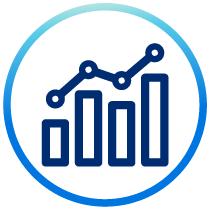Build Your Brand with a Corporate Apparel Program
Develop a clear corporate identity for your business. Let your apparel enhance your brand and build professional pride in your employees. With a corporate apparel program designed for you, GO2 provides you with a partner dedicated to making your life easier and saving you time. Our comprehensive apparel options and end-to-end service are the turnkey solutions your business needs.

Customizable Apparel Solutions

Brand recognition
Are you tired of jumping through hoops while trying to develop and support your corporate apparel program? Company-branded merchandise and clothing promote brand recognition and help customers identify with your business.

Reduce complexity
The work required to build and manage a successful company store can quickly grow to more than one person or a team can handle. Let our experts take over and manage your corporate apparel program for you.

Tailored solution
GO2 Partners’ all-in-one apparel program gives you access to a turnkey, comprehensive solution for your corporate branding and apparel needs. GO2 gives you access to the world’s best brands at competitive prices.
A program customized for your business
You’re not a one-size-fits-all business. You have unique customers, diverse business goals, and internal processes designed to boost efficiency. You need an apparel program designed around you. GO2 works closely with you to build a program that meets your needs, with an Account Manager assigned to you for additional resources when you need them.

High-quality apparel at low prices
GO2 maintains relationships with the top apparel and uniform manufacturers around the globe. When you work with us, you take advantage of these relationships and get access to the highest-quality apparel at costs that make you smile.
GO2 Partners built a new corporate apparel strategy and found high-quality apparel
for a franchisor and their franchisee locations.


Easy access to ecommerce data and reports
GO2 provides a customized online storefront that makes it easy to monitor and track your orders. Our ecommerce approach to apparel streamlines operations and makes it easy for you decentralize ordering, yet centralize control. We also provide comprehensive program reports that give you the critical data needed to make effective decisions.
Customizable fulfillment options
If you’re using your company’s valuable storage space to maintain your apparel stock, we can help. With our fulfillment options, you can choose how you want to maintain your apparel inventory. GO2 can keep your stock on hand in our own facilities and ship products within 24 hours.

Access Additional Experts & Services
Get Started with a Fresh Approach to Apparel
As one of the industry’s leading providers of branded merchandise, GO2 knows how to create an apparel program that works.

Customer Success Story
GO2 Partners streamlined, simplified and created efficiencies for the corporate apparel program for a major construction company.
Latest News and Information

How Corporate Apparel can Help Build Your Brand
Keep Reading

5 Reasons Why Businesses Fail at Corporate Apparel Programs
Keep Reading
Industries

Retail
We take the stress and worry out of providing apparel for our retail customers. That includes high-quality apparel that’s easy to order.

Franchises
Franchisees and franchisors count on GO2 Partners’ support in meeting their business goals, including providing apparel solutions that are on brand and easy to order for franchisees.

Insurance
It’s easy for insurance companies to promote their brand and boost employee engagement with a corporate apparel program.



